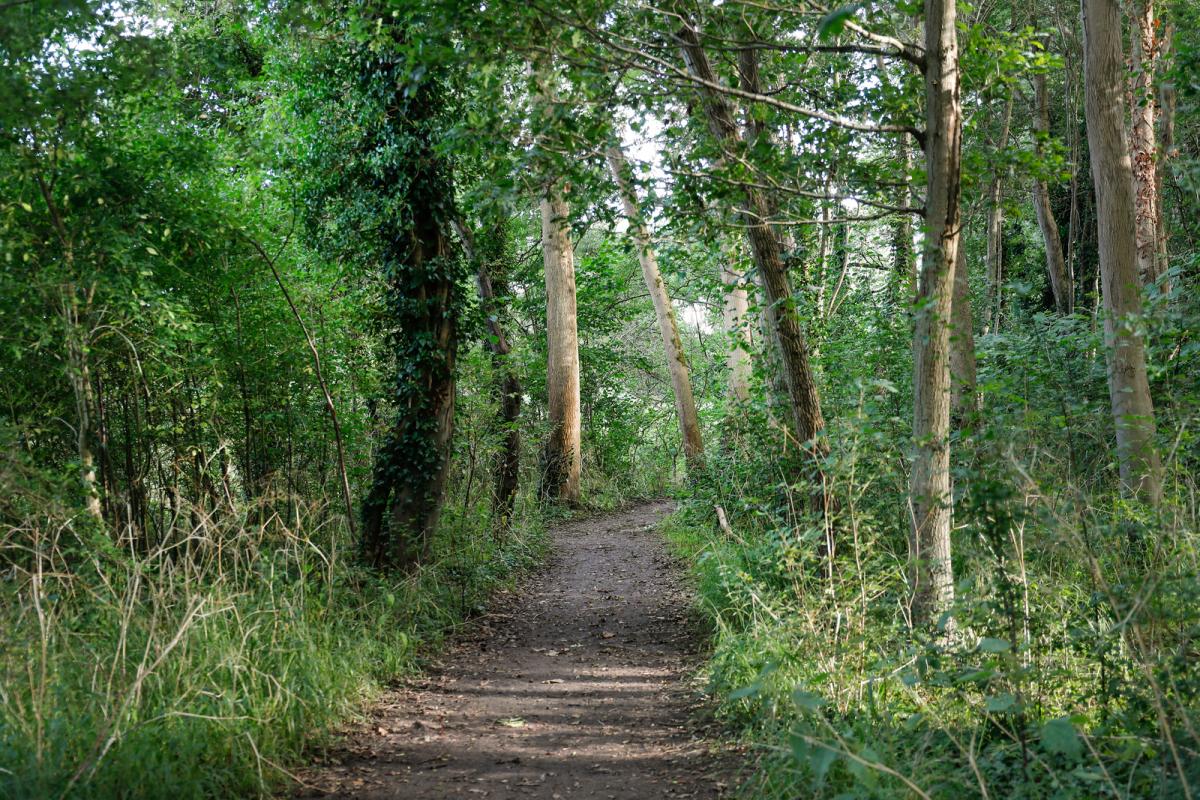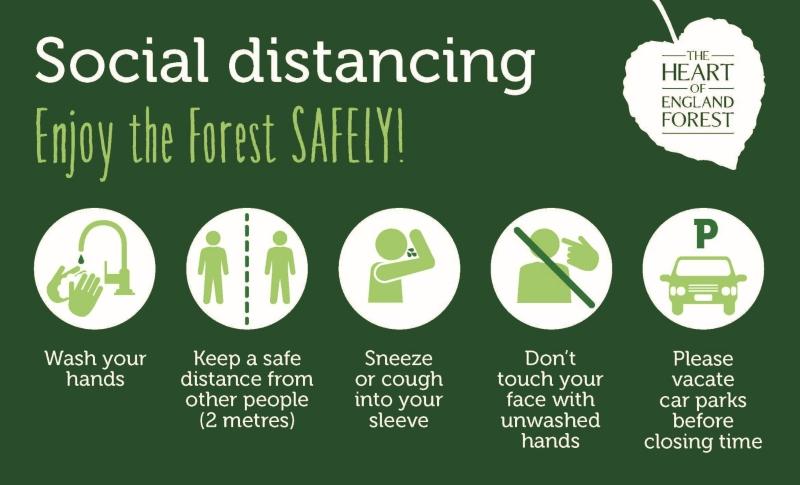
The health benefits of trees
The Covid-19 pandemic has brought the importance of getting into the great outdoors and connecting with nature sharply into focus. Spending time in forests and woodlands supports and improves our physical health and mental wellbeing, so there has never been a more vital time for us to take advantage of the health benefits of trees.
Keeping the Forest open for people
Coronavirus has affected us all, and the impact of lockdown and the spread of the virus on our mental wellbeing cannot be understated. The Heart of England Forest remains open currently, and we’re encouraging members of the public to safely and responsibly benefit from our Forest and trees. We urge people to be mindful of the latest Government guidelines when visiting.

Forests and physical exercise
Many of us are familiar with the experience of trudging along a treadmill in a gym or doing HIIT sessions at home to improve our physical health. However, in a country filled with gyms and exercise facilities, our physical and mental health is steadily declining. Forests are a combination gyms and playgrounds, they area places to connect with nature in the same way as our ancestors did. How often have you seen a deer in the gym?
A study published in the Extreme Physiology and Medicine journal found that exercising outside can reduce stress, restore mental fatigue and improve mood, self-esteem and perceived health.
The same study emphasised the need to ensure that everyone has access to natural spaces to exercise. The Heart of England Forest recently opened its first accessible trail at Morgrove Coppice, which aims to make it possible for more people to benefit from time in the Forest. This trail is suitable for wheelchairs and pushchairs and offers a pleasant meander through a mixed woodland.

Forest walking and health benefits
Exercising doesn’t have to mean running a 10k through the woods, as even a brisk walk can be an excellent way to increase your activity levels and improve your health. How can you tell if you’re walking briskly? A good rule of thumb is that you should be able to talk comfortably with some breathlessness (around 15-20 minutes per mile). Find out more about the benefits of brisk walking.
The specific health benefits of walking are varied and include improved heart health, reduced joint pain, increased immune function, decreased blood sugar and strengthened leg muscles.
Aerobic exercises like walking and running have been proven to improve mental health by reducing anxiety and depression. Physically active people have up to 30% less chance of becoming depressed.
So, how can we make walking even better for us? By doing it in the woods! Spending time walking in the woods combines all the physical and mental health benefits of exercising and being in nature, creating a supercharged boost to your health.
The health benefits of spending time in nature are numerous, including lowering blood pressure and stress hormones, improving mood, reducing anxiety and increasing self-esteem. A study by the University of Exeter found that 120 minutes a week is the point at which people reported the most health benefits from being in nature – that’s just under twenty minutes a day.

Forest bathing
You may have heard of shinrin yoku or ‘forest bathing’ in the media. This Japanese concept is rapidly gaining recognition across the world as a valuable tool for relaxation and mental health. Anyone can do it, and it can be done whilst adhering to social distancing. Follow the steps below:
- Find a forest! The quieter the location the better. If you have a preferred type of forest or environment then choose your location based on this. Maybe you want somewhere with running water or the smell of blossom? Let someone know where you’re going to be and how long you’re going to be out for. If you need to be sitting down, either choose a location with seating or bring something to sit on.
- Put all your technological devices on silent or turn them off to limit your distractions.
- Begin by focusing on your breathing. Inhale deeply and exhale slowly. Be aware of the sensation of your breath and how your body reacts to it.
- Remain still and engage with your surroundings with all your senses. Ask yourself, what can I see? Hear? Smell? Feel the breeze on your skin, smell the musty humus and hear the birdsong in the canopy.
- As thoughts or worries enter your mind, gently acknowledge them and return your attention to your surroundings, observing them coming and going with a gentle, detached curiosity. It is normal for our busy minds to bombard us with thoughts, but we can choose to focus our attention elsewhere.
- Remain for as long as you are comfortable.
A Forest for people
In addition to protecting the environment, mitigating climate change, and providing vital habitats, the Heart of England Forest is here to support your physical health and mental wellbeing, and always will be.
Elaine, our Head of Learning and Skills, is committed to getting children and adults to spend time in the Forest. Read her 5 reasons to spend time in the Forest.



